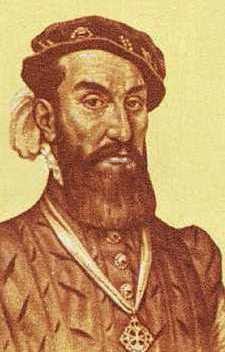Texas History starts whenever the historian wants it to start. Some have placed the beginnings of Texas at the time man first crossed the land bridge at the Bering Strait and began to filter down between the glaciers into North America and naturally settle in the garden spot of this continent, around present-day Lubbock, Texas.
Newer evidence suggests
that this migration happened, but may not have populated Texas. The first humans on Texas soil may have come
from Europe or Africa, by sailing across a narrow part of the Atlantic, landing
in South America and working their way north.
Then again, they may have floated over from Polynesia and landed in
Chile. Perhaps all of the above
contributed to the settlement of early Texas.
Because of advances in the study of DNA, all these theories have some
merit and are being investigated.
No matter how they
got here, there is solid evidence that humans lived near Lubbock over 12,000
years ago. At the Lubbock Lakes
Archeological Site, one excavated cliff wall shows proof of continual
habitation from before that time. This site is the only place in North America
showing such evidence. Indications are
that early Texans hunted Wooly Mammoths and Giant Bison in this area, butchered
their kill here, and dried and preserved the meat. A variety of artifacts, flint spear points,
arrowheads, and cutting tools show that these Indians were nomads. Some lived
near here and others came from afar or perhaps traded with distant peoples.
Instead of
getting into an argument about who came first from where, fast forward 12,000
years to 1211 A.D. The Moors from North
Africa conquered most of the south half of the Iberian Peninsula and the Pope
in Rome was worried they would take the rest of Spain, and then Europe, which
would put him out of a job. He was so
worried that he ordered the Christian Kings of the area to quit squabbling
among themselves and join together in a Crusade against the Muslims. Most everyone joined. It is no surprise that the French didn’t like
the rules and took their 30,000 knights and went home.
Pope Innocent III ordered this Crusade. Thinking this might be the first example of
an oxymoron in modern history, I read all I could about him. He was not the first oxymoron—at least two
examples preceded him—Innocent I and II.
King Alphonso
VIII of Castile, Jimenez De Rado, the
Archbishop of Toledo, Sancho VII of
Navarre, and Pedro II of Aragon followed
Innocent III’s orders, pooled their armies, and set out with some 50,000
soldiers to fight the Saracens. The
Muslim horde, estimated to be over 125,000 men, was camped in a secure valley
near Las Navas, protected on all sides by impassable mountains. They rested peacefully, knowing they
controlled the high ground at the only known pass into the valley.
A local shepherd,
Martin Alhaja, (or Halaja) told the soldiers of a secret pass into the valley
which he had marked with a cow’s skull. The troops found the pass, staged a forced
march through the night, and surrounded the surprised Muslims on the morning of
July 16, 1212. The ensuing Battle of Los Navas de Tolosa was a
slaughter.
 |
| Sancho VII making short work of the Caliph's guards. |
The caliph in
charge of the Muslims, Muhammad al-Nasir, camped in a splendid tent on a rise
near the center of his army. His tent
consisted of “three-ply crimson velvet flecked with gold; strings of pearls descending
from its purple fringes.” Rows of chain
radiated from the center of his camp, and tied in place 3,000 camels. Inside the ring of camels, 10,000 black
slaves were chained together in a circle, their steel tipped lances facing
outward at an angle, with the bases buried in the ground. According to reports by the Christians, the caliph stood inside this protection,
“wearing the green dress and turban of his ancestral line,” holding a scimitar
in one hand and a Koran in the other. He
read passages from the Koran which promised all the delights of paradise to any
young man who perished in religious battle and the torments of hell to any
coward who should desert his ranks.
The Spanish
attacked eagerly. Sancho VII drove his war horses through the lines of
camels and made short work of the chained, immobile slave guards. Muhammad al-Nasir fled on a mare and “did not
rest until he had reached Jaen,” where he spent long hours writing elaborate
excuses as to why he lost the battle. The
Spanish soldiers roamed the mountains for the next few days, slaughtering
Muslim stragglers. Causality estimates
are perhaps exaggerated, but approximately 100,000 Muslims are claimed to have
perished, while the Spanish only lost some 2,000 men.
Written accounts
of the battle are available from both sides and are interesting in their
contradictions. Moorish reports tend to
stress the unavoidable series of unfortunate circumstances which befell the
competent commanders, while most of the Spanish reports come from various
letters to the Pope and uniformly cite the hand of God and the influence of the
Pope in the victory. Self-serving
statements praising the authors are scattered through all the documents, no matter which side they represent.
The caliph’s
elaborate tent was sent to Innocent III as a gift from Alphonse VIII, in case the
Pope needed a folding three-bedroom, two-bath place to sleep. Perhaps in deference to the Pope, no mention
was made of the dispensation of the harem. The poor shepherd, Martin Alhaja,
was appointed a nobleman, and gifted appropriate lands and a coat of arms. He was bestowed the title Cabeza de Vaca—the
head of the cow.
 |
| Alvar Nunez Cabeza de Vaca, probably in 1540 or so. He must have been very wise, because he sure wasn't pretty. |

No comments:
Post a Comment